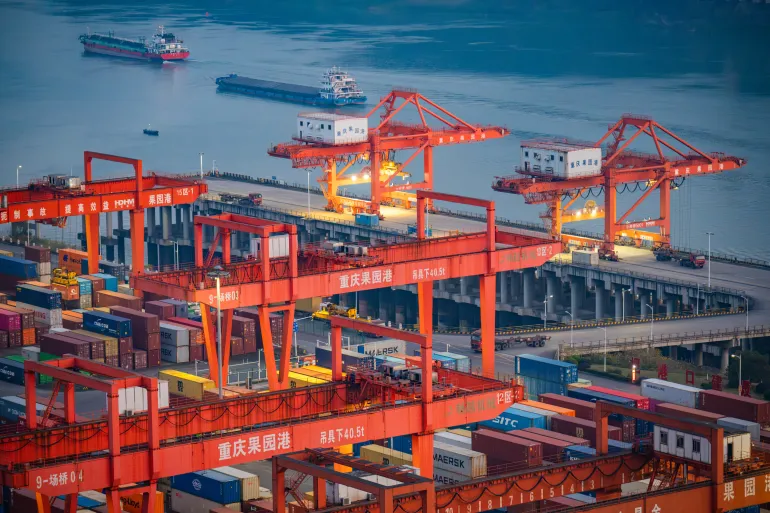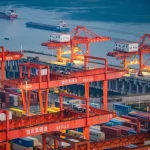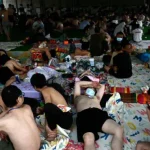The economic relationship between the United States and China has always been a complex mix of cooperation, competition, and contention. For decades, China’s rapid growth as the world’s manufacturing powerhouse was underpinned by its vast export industry, with the United States serving as one of its largest and most lucrative markets. However, this interdependence has increasingly become a source of friction rather than stability. In recent years, the persistent disputes over tariffs have begun to cast a long shadow on China’s export performance, reshaping global trade dynamics and creating ripple effects across economies worldwide.
- The Origins of the US-China Tariff Conflict
- How Tariffs Impact China’s Export Economy
- Statistical Evidence of Export Slowdown
- The Ripple Effects on Global Supply Chains
- China’s Strategic Response to Tariffs
- The US Perspective on Tariffs
- Expert Views on the Future of US-China Trade
- The Human Dimension of Tariff Disputes
- FAQs
- Why are US tariffs affecting China’s export growth?
- How has China responded to US tariffs?
- What impact do tariffs have on American consumers?
- Which countries are benefiting from the US-China trade conflict?
- Could the US and China resolve their tariff disputes soon?
- Conclusion
The imposition of tariffs, retaliatory measures, and policy uncertainty have not only slowed China’s export growth but also exposed vulnerabilities within its economic model. For businesses on both sides of the Pacific, the tariff disputes have meant disrupted supply chains, higher production costs, and a profound shift in investment strategies. Understanding the impact of these disputes is crucial, not just for policymakers and economists, but for consumers, businesses, and workers whose livelihoods are directly affected by the evolving trade war.
The Origins of the US-China Tariff Conflict
The roots of the current tariff tensions trace back to long-standing grievances between Washington and Beijing. The United States has consistently accused China of unfair trade practices, including intellectual property theft, forced technology transfers, and state subsidies that give Chinese firms an edge in global markets. In 2018, under the administration of President Donald Trump, these grievances escalated into direct trade conflict when the US imposed tariffs on a wide range of Chinese imports, sparking a series of retaliatory measures from Beijing.
While subsequent administrations, including that of President Joe Biden, have adjusted the strategy, the essence of the trade conflict has persisted. Tariffs remain in place on hundreds of billions of dollars worth of goods, creating lasting disruptions in the flow of trade between the two countries.
How Tariffs Impact China’s Export Economy
China’s export-led growth model has been a cornerstone of its economic success. For decades, double-digit growth in exports fueled industrial expansion, job creation, and rapid urbanization. The introduction of US tariffs has disrupted this momentum.
Higher tariffs increase the cost of Chinese goods in the American market, making them less competitive compared to products from other countries or domestic alternatives. This decline in competitiveness has been reflected in slower growth rates for Chinese exports, particularly in sectors heavily targeted by tariffs such as electronics, machinery, and textiles.
At the same time, uncertainty surrounding the future of trade relations discourages long-term investment decisions. Multinational companies, wary of further tariff hikes or supply chain disruptions, are increasingly diversifying production away from China to countries like Vietnam, India, and Mexico. This trend, often referred to as “decoupling,” represents a structural shift that threatens to erode China’s dominance in global manufacturing.
Statistical Evidence of Export Slowdown
Recent data underscores the toll of tariff disputes on China’s export performance. According to China’s General Administration of Customs, export growth has slowed significantly in the past few years. While China’s exports surged during the pandemic due to high global demand for medical supplies and electronics, growth has since faltered. In some months, exports to the United States have even recorded year-on-year declines, highlighting the sensitivity of the Chinese economy to American trade policy.
For example, in 2023, China’s exports to the US dropped by more than 10% compared to the previous year, while overall global exports grew only marginally. This divergence reflects the specific impact of US tariffs, compounded by geopolitical tensions and the global push for supply chain resilience.
The Ripple Effects on Global Supply Chains
Tariff disputes do not occur in isolation. The global economy is highly interconnected, and disruptions in US-China trade reverberate worldwide. Companies that rely on components manufactured in China face higher costs, which are often passed on to consumers. Conversely, American farmers and exporters have also been hit by Chinese retaliatory tariffs, reducing their access to one of the world’s largest markets.
The result is a complex web of winners and losers. Some countries, such as Vietnam and India, have benefited from production shifts away from China, attracting new investments and expanding their export sectors. Meanwhile, industries that depend heavily on cross-border trade, such as electronics, automotive, and consumer goods, have had to adapt to rising costs and logistical challenges.
China’s Strategic Response to Tariffs
In response to the pressures of tariffs, China has adopted a multi-pronged strategy. One major initiative is the “dual circulation” policy, which emphasizes boosting domestic consumption to reduce reliance on exports. At the same time, China continues to diversify its export markets, deepening trade ties with regions like Southeast Asia, Africa, and Latin America.
China has also invested heavily in upgrading its manufacturing capabilities, seeking to move up the value chain into advanced industries such as semiconductors, electric vehicles, and green technology. By reducing dependence on low-cost manufacturing, Beijing hopes to mitigate the vulnerability of its economy to external shocks like tariffs.
The US Perspective on Tariffs
From the American perspective, tariffs serve both economic and political purposes. Supporters argue that tariffs protect domestic industries from unfair competition, encourage reshoring of manufacturing jobs, and provide leverage in negotiations with China. Critics, however, point out that tariffs often raise costs for American consumers and businesses, effectively functioning as a tax on imports.
According to a 2022 study by the Peterson Institute for International Economics, US tariffs on Chinese goods increased costs for American households by an average of $1,200 per year. This underscores the complexity of tariff policy, which often produces unintended consequences for domestic economies.
Expert Views on the Future of US-China Trade
Economists and political analysts remain divided on the long-term outlook for US-China trade relations. Some believe that tariffs will remain a fixture of the relationship, reflecting deep-seated strategic competition between the two superpowers. Others argue that mutual economic dependence will eventually force both sides to seek compromise, particularly as global challenges such as climate change and technological innovation demand cooperation.
Dr. Mei Li, an international trade expert, explains: “Tariffs are not just about economics—they are about geopolitics. The United States and China are competing for global influence, and trade is one of the battlegrounds. This competition will likely persist for years, shaping the future of globalization.”
The Human Dimension of Tariff Disputes
Beyond statistics and policy debates, tariff disputes have a direct impact on people’s lives. Workers in Chinese factories producing goods for the US market face uncertainty as demand fluctuates. In the United States, farmers and small business owners struggle to navigate retaliatory measures that restrict their access to Chinese markets. Consumers in both countries experience rising prices on everyday goods, from clothing to electronics.
These human stories remind us that trade disputes are not abstract economic battles but real challenges that affect livelihoods across the globe.
FAQs
Why are US tariffs affecting China’s export growth?
US tariffs make Chinese goods more expensive in the American market, reducing competitiveness and discouraging long-term investment in China’s export-driven industries.
How has China responded to US tariffs?
China has pursued strategies such as boosting domestic consumption, diversifying export markets, and investing in advanced manufacturing to reduce reliance on the US.
What impact do tariffs have on American consumers?
Tariffs often raise the cost of imported goods, leading to higher prices for American households. Studies suggest households pay hundreds to thousands more per year.
Which countries are benefiting from the US-China trade conflict?
Countries like Vietnam, India, and Mexico have attracted new investments as companies diversify supply chains away from China, boosting their export sectors.
Could the US and China resolve their tariff disputes soon?
While some experts hope for compromise, many believe tariffs will remain due to broader geopolitical competition and strategic rivalry between the two nations.
Conclusion
The ongoing tariff disputes between the United States and China represent far more than a trade disagreement; they are a defining feature of 21st-century geopolitics. By weighing heavily on China’s export growth, tariffs have exposed vulnerabilities in the world’s second-largest economy while reshaping global supply chains. For the United States, the policy has been a double-edged sword, offering leverage against China but also raising costs for consumers and businesses.
As both nations grapple with the consequences, the rest of the world watches closely, aware that the trajectory of US-China trade relations will shape the future of globalization itself. The challenge for policymakers lies in navigating this conflict without undermining the stability and prosperity that global trade has delivered for decades. Ultimately, whether cooperation or confrontation prevails will depend on how the world’s two largest economies balance their competing interests in the years ahead.












